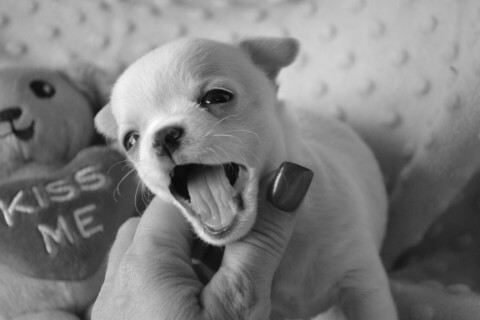
AKC Fast CAT Invitational Winner – Speed of the Breeds Division: Beetle – Handler: Carrie Griffen-Yakush
Interview with Carrie Griffen-Yakush, handler of “Beetle,” the 2022 AKC Fast CAT Invitational Winner, in the Speed of the Breeds Division.
Home » Meet The Breeds » Chihuahua
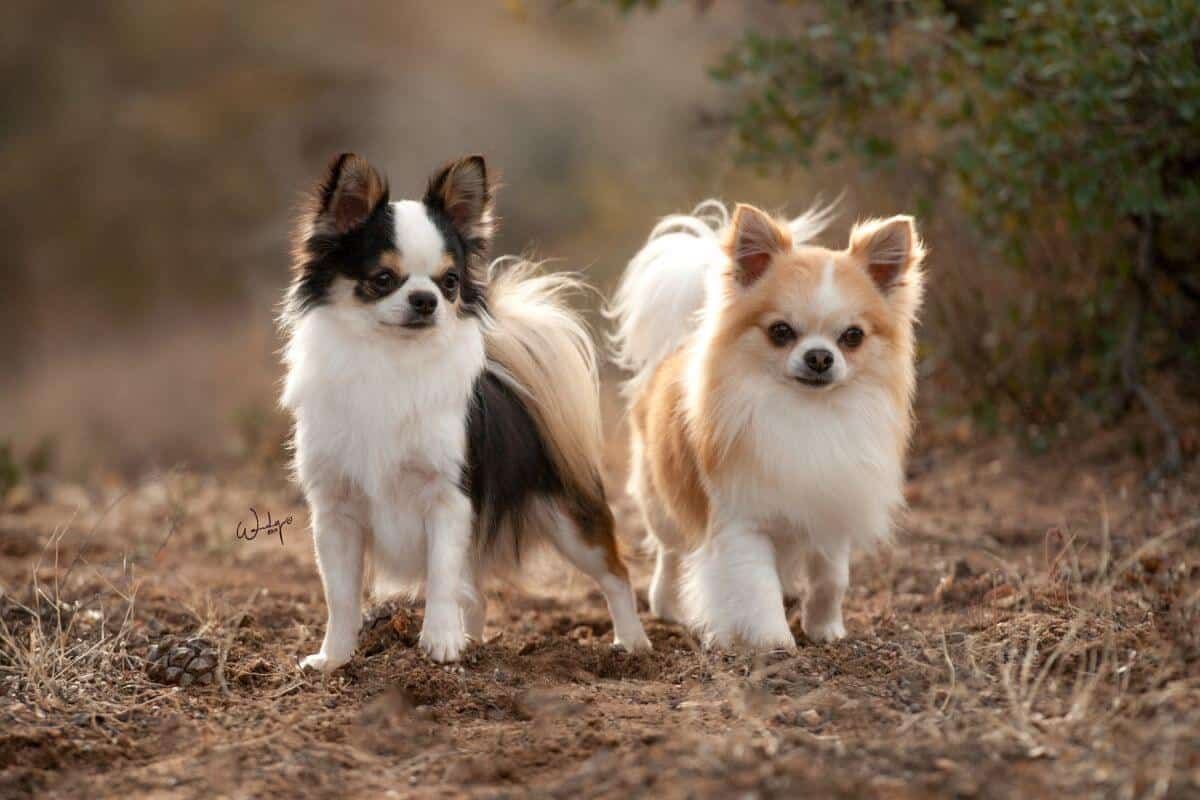
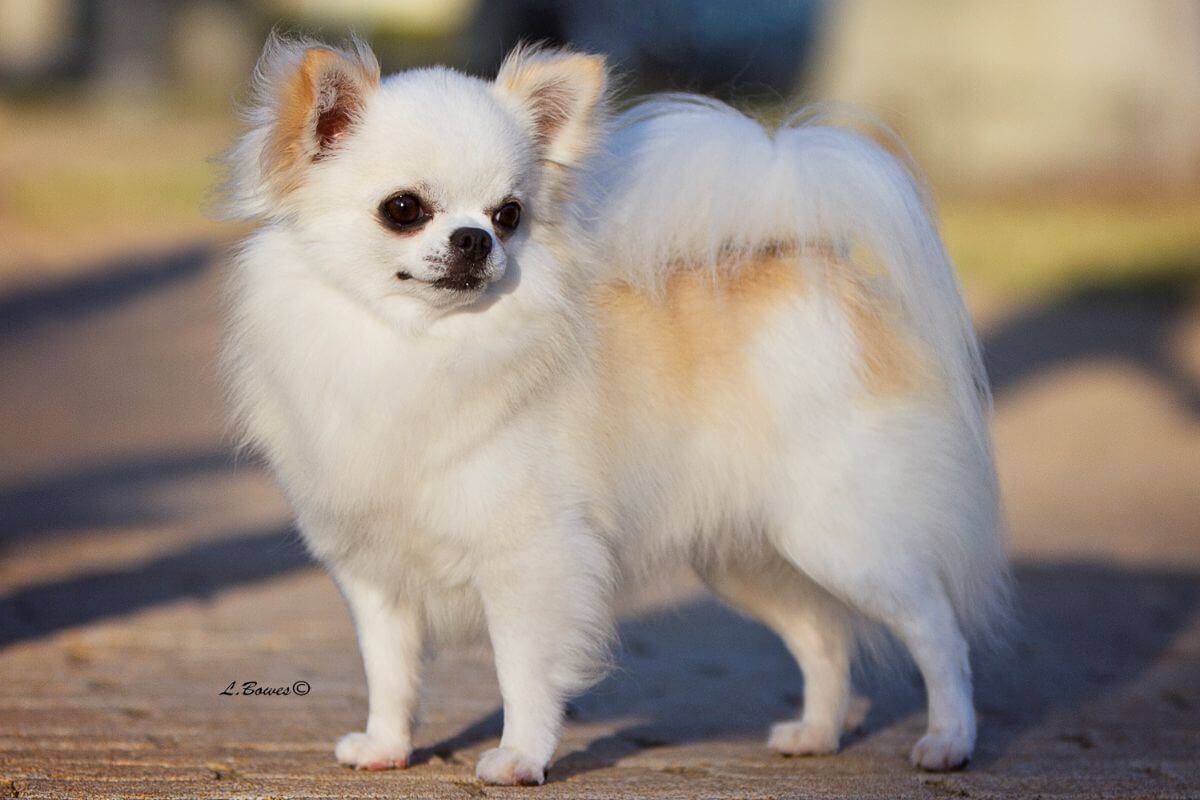
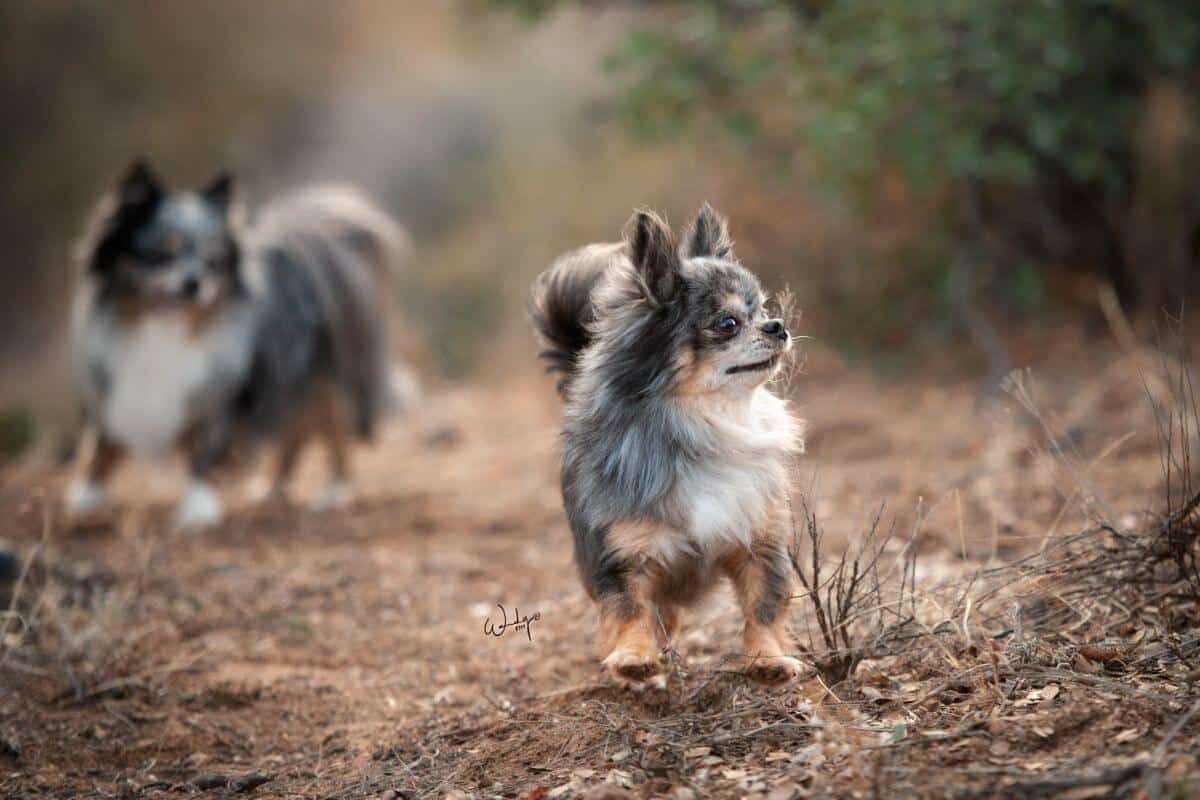
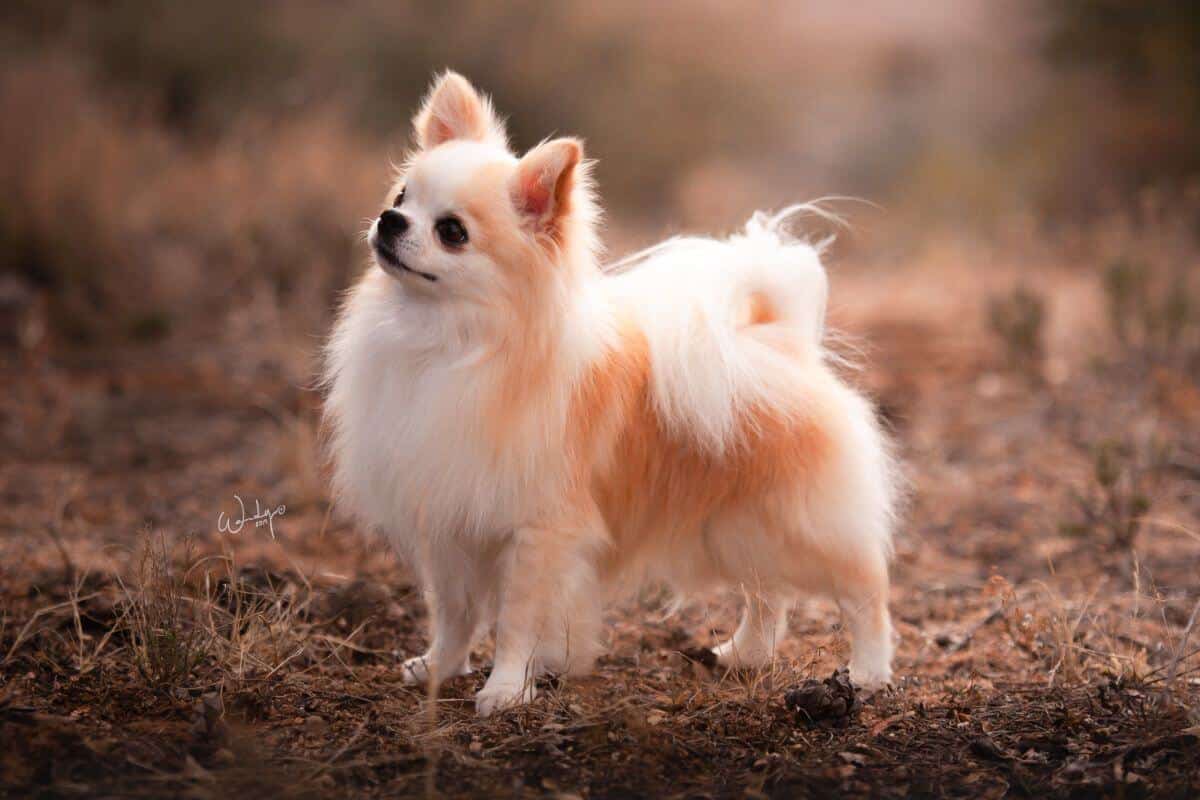
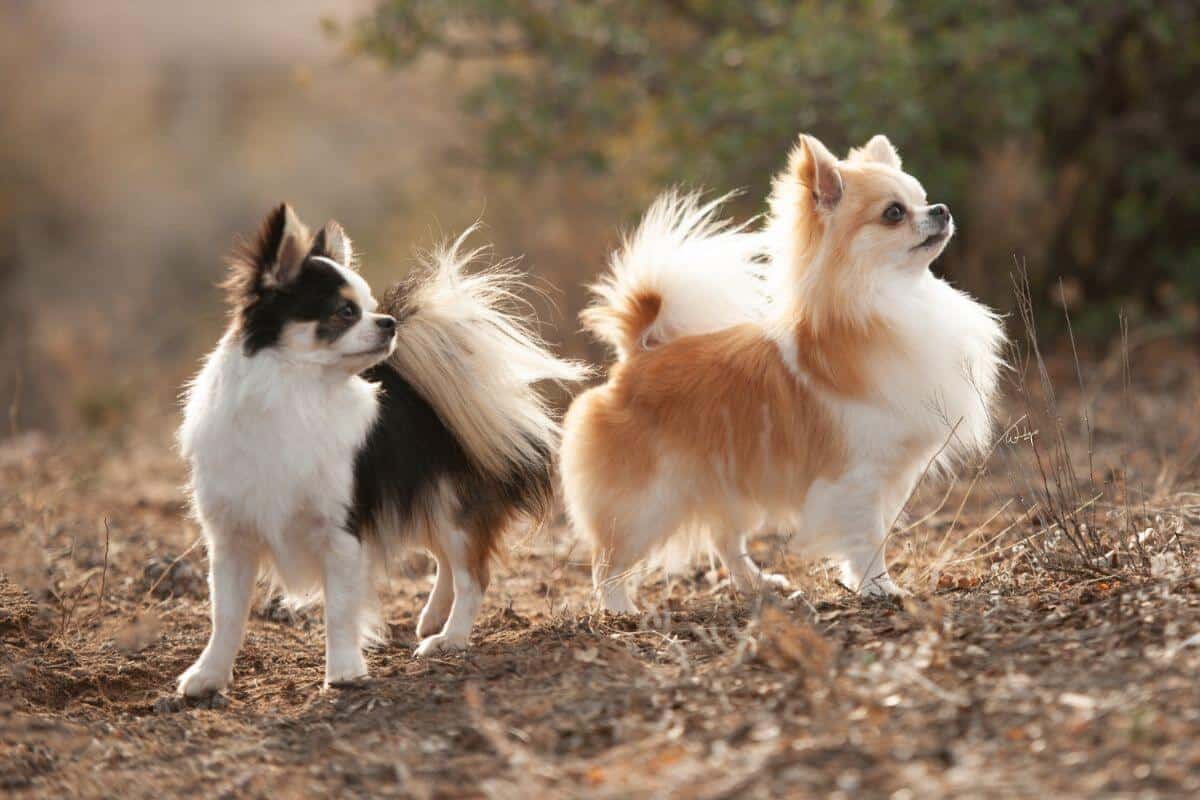
The Chihuahua is renowned for its diminutive size, vivacious personality, and unwavering loyalty. As the smallest of all dogs, the breed holds a special place in the hearts of those who know it for the very big dog it thinks it is. Originating in the Mexican state of the same name, the Chihuahua has long been prized for its many charms and those oh so expressive eyes. Despite its small stature, the Chihuahua possesses a bold and confident personality, often unaware of its own size in the presence of larger dogs. Because they are adaptable to a variety of living environments, Chihuahuas can be ideal companions for city dwellers and those with limited space.
Toy
5 – 8 inches
under 6 pounds
14 – 16 years
| Country of Origin | Mexico |
|---|---|
| Bred For | Companionship |
| Known For | Small Size, Independence, Affection |
| Popularity | High |
| Temperament | Alert, Confidence, Graceful |
| Activities | Running, Conformation Shows, Dog Sports |
The Chihuahua is generally considered the smallest dog breed in the world, and its history is as colorful and fascinating as the breed itself. Originating from the Mexican state of Chihuahua, the breed’s ancestry can be traced back to the ancient civilizations of the Toltecs and the Aztecs. The Chihuahua’s predecessors were believed to be the Techichi dogs, small, silent companions kept by the Toltec people as early as the 9th century.
When the Aztecs conquered the Toltecs, they absorbed the Techichi into their society, valuing the dogs for their religious significance and their role as companions. Historical records suggest the Aztecs believed Techichis had mystical powers, including the ability to guide the souls of the dead through the underworld.
The modern Chihuahua’s story began in the mid-19th century with their “discovery” in local markets by visiting Americans. The visitors from El Norte brought the tiny canines back to the United States where they were an instant hit. The Chihuahua’s popularity quickly increased north of the border, winning many admirers among dog show exhibitors.
The American Kennel Club (AKC) officially recognized the Chihuahua as a breed in 1904. Since then, the Chihuahua has become a beloved companion in homes worldwide, admired for its loyalty, intelligence, and spirited personality. Despite their petite size, Chihuahuas have a bold and confident demeanor, often unaware of their own size limitations.
Appearances in various media have had a tremendous effect on the breed’s popularity, making it an instantly recognizable icon. Today, Chihuahuas are not only cherished companions and commercial mascots, they’re also determined competitors at dog shows and in various dog sports where they display their charm, intelligence, and versatility.
The Chihuahua’s rich history, from ancient Mexican civilizations to modern-day Main Street, underscores the breed’s enduring appeal and the special place it holds in the hearts of dog enthusiasts around the world.
The Chihuahua is characteristically small but should not be delicate or fragile in appearance. Male and female Chihuahuas generally vary in height from 5 to 8 inches tall at the shoulders. Their weight is ideally between 2 and 6 pounds. Dogs weighing more than 6 pounds are unacceptable.
The Chihuahua exhibits a compact body with well-sprung and rounded ribs. The body should be slightly longer than tall, measured from the point of shoulder to the point of the buttocks. Males can have somewhat shorter bodies than females. Overall balance, without exaggeration, is essential in this small but substantial dog. Despite their light weight, Chihuahuas should not appear frail or excessively thin; they need to display a symmetry, soundness, and vigor.
Texture: The Chihuahua’s coat comes in two varieties: Smooth and Long. The Smooth Coat should be soft, close, and glossy, with a ruff on the neck. Heavier coats with undercoats are acceptable, and the hair on the tail is often “furry.” The Long Coat is characterized by its soft texture, either flat or slightly curly. Ideally, there’s an undercoat. Fringing on the ears, a ruff on the neck, feathering on the feet and legs, “pants” on the hind legs, and a plume on the tail give this variety its distinctive appearance. Other than the coat, both varieties are identical and both regular grooming to maintain their condition and appearance.
| Standard Color | |
|---|---|
| Black | ee |
| Black & Tan | ee |
| Blue & Tan | ee |
| Chocolate | ee |
| Chocolate & Tan | ee |
| Cream | ee |
| Fawn | ee |
| Fawn & White | ee |
| Red | ee |
| Black & White | n |
| Black Sabled Fawn | n |
| Black Sabled Silver | n |
| Blue | n |
| Blue & White | n |
| Blue Brindled Fawn | n |
| Chocolate & White | n |
| Chocolate Blue | n |
| Chocolate Brindled Fawn | n |
| Chocolate Sabled Fawn | n |
| Cream & White | n |
| Fawn Brindled Black | n |
| Gold | n |
| Gold & White | n |
| Red & White | n |
| Silver | n |
| Silver & White | n |
| White | n |
A Note About Color: The Chihuahua can be any color; solid, marked, or splashed. All colors are acceptable and no color is preferred.
| Standard Marking | |
|---|---|
| Black Brindling | ee |
| Black Mask | ee |
| Black Sabling | ee |
| Spotted On White | ee |
| White Markings | ee |
| Black Mask, White Markings | n |
| Blue Mask | n |
| Cream Markings | n |
| Fawn Markings | n |
| Red Markings | n |
| Merle Markings | Y |
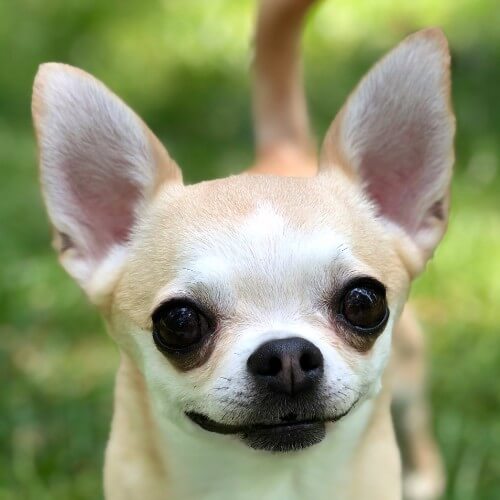
The tail of the Chihuahua is moderately long and carried in either a loop over the back, with the tip just touching the back, or in a more relaxed sickle shape. The tail should never be tucked between the legs or curled below the backline. A bobtail, and a tail that has been docked, is not acceptable.
Whether the Chihuahua has a long or smooth coat influences the tail’s appearance. Long Coats feature a plume of long and full fringes, whereas the Smooth Coats feature a tail that’s simply furry. The natural carriage and appearance of the tail are essential characteristics, contributing significantly to the Chihuahua’s lively and confident demeanor.
The Chihuahua, renowned for its compact size and vivacious character, is beloved by many and often chosen for both companionship and competitive activities. Prospective owners must appreciate the breed’s distinctive personality traits and requirements to foster a harmonious relationship in the home and when out and about.
Chihuahuas are generally considered to be healthy and resilient dogs, with a well-cared-for individual typically enjoying a lifespan of 14 to 16 years. Nevertheless, these dogs do have a few breed-specific health issues that owners should be mindful of to ensure their pet’s longevity and well-being. Partnering with a reputable breeder and a knowledgeable veterinarian is crucial for monitoring and addressing any health concerns promptly.
Chihuahuas, like all breeds and mixed breeds, many be predisposed to certain health conditions. Owners should be vigilant and proactive in monitoring their dog for signs of common health issues to ensure early detection and treatment. Here are some of the potential health risks associated with Chihuahuas:
Regular veterinary check-ups are essential for early detection and management of these conditions. Veterinarians can provide guidance on preventive care, including proper nutrition, exercise, and dental hygiene, to help mitigate the risks of these health and other issues. Addressing any concern promptly can greatly enhance the quality of life for the Chihuahua and support a long, healthy relationship with its family.
Understanding the personality of a Chihuahua is crucial for anyone who is considering this breed as a companion. Despite the breed’s small size, Chis are known for their big personalities, brimming with confidence and charm. These dogs are fiercely loyal to their owners, often forming a strong, inseparable bond with their primary caretaker. This loyalty can sometimes manifest as over-protectiveness, making early socialization and training key to developing a well-rounded dog.
Chihuahuas can be ideal for novice owners due to their size and manageability, but their strong-willed nature requires consistent, gentle training. They are sensitive dogs that do not respond well to harsh discipline. Their sensitivity also extends to their environment; Chihuahuas prefer warmth and can become anxious or shivery in cold climates.
Though small, Chihuahuas are not passive dogs. They have a moderate-to-high energy level and enjoy being engaged in all sorts of activities. Despite their size, they are often good with children, especially if raised with them. However, all interactions should be supervised to make sure the dog is not accidentally injured due to its tiny size.
When it comes to other dogs and strangers, a Chihuahua’s reaction can vary. Some are very sociable and enjoy the company of other dogs, while others may be more reserved or even standoffish. Early socialization can help a Chihuahua become more accustomed to a variety of people and animals, reducing the chance of fearful or aggressive reactions.
Proper feeding and nutrition are fundamental to a Chihuahua’s health and well-being. Given the breed’s small size, these dogs have specific dietary needs that must be met to ensure they maintain optimal health, energy, and longevity. The amount and type of food given to a Chihuahua can significantly impact its overall health, weight, and energy level.
For Chihuahua puppies, it’s crucial to provide a high-quality puppy formula that supports rapid growth and development. Puppies should be fed more frequently, typically three to four times a day, to keep up with their energy demands and support healthy growth. As they transition to adulthood, the frequency of mealtimes can be reduced to twice daily.
Adult Chihuahuas require a balanced diet that includes all necessary nutrients in the right proportions. The amount of food that’s needed depends on the dog’s age, size, activity level, and metabolism. On average, a Chi needs about ¼ to ½ cup of high-quality dry dog food each day, divided into two meals. This can vary, however, so it’s important to adjust the food amount based on the dog’s individual needs and to consult with the dog’s breeder or veterinarian for specific dietary recommendations.
Monitoring a Chihuahua’s weight is also vital, as obesity can lead to numerous health issues, including joint problems, diabetes, and heart disease. Treats should be given sparingly and should account for no more than 10 percent of a Chihuahua’s daily caloric intake.
In addition to providing the right amount of food, having access to fresh, clean water at all times is essential for a Chihuahua’s overall health. Regular veterinary exams can help to monitor the dog’s nutritional needs, and they can allow for adjustments to be made that will address any potential concerns.
Training a Chihuahua requires patience, consistency, and an understanding of the breed’s unique temperament. Training should begin early to establish good habits and to prevent the development of undesirable behaviors. Despite their small size, Chihuahuas are intelligent and capable learners that respond well to positive reinforcement techniques such as praise, treats, and play.
Chihuahuas are known for their spirited and sometimes stubborn nature, which can pose challenges during training sessions. These dogs benefit from short, engaging training exercises that can hold their attention and make learning enjoyable. Persistence is key, as is the need to establish clear and consistent rules to prevent the Chi from developing “small dog syndrome,” where they believe they need to always be in charge.
Socialization is a crucial aspect of Chihuahua training, helping to mitigate the breed’s tendency towards wariness or aggression when meeting strangers or other animals. Exposing these dogs to a variety of people, environments, and situations can help them become well-adjusted and confident adults.
Chihuahuas can be vocal, especially if they feel threatened or overly excited. Teaching these dogs a “quiet” command early on can help to manage this tendency. Additionally, despite the breed’s diminutive size, Chihuahuas can be effectively house-trained with consistent routine and positive reinforcement.
Training a Chihuahua also includes teaching the dog how to walk properly on a leash. While Chis may not require extensive exercise, regular walks are important for their physical and mental health. Training them to walk without pulling or becoming distracted reinforces good behavior and ensures enjoyable outings for both the dynamic little dog and its proud owner.
Exercise is a crucial aspect of a Chihuahua’s health and well-being, despite the breed’s small size. While these dogs may not require the same level of physical activity as larger breeds, regular exercise is essential to keep them healthy, prevent obesity, and manage their energy levels. A well-exercised Chihuahua is more likely to be well-behaved and content.
| Energy Level | Moderate to High |
|---|---|
| Exercise Requirements | 1 Hour/Day (Minimum), Daily Walks, Vigorous Running, Regular Exercise, Mental Stimulation |
The Chihuahua typically has a moderate energy level that needs to be channeled through daily activities and play. These dogs enjoy going for short walks, which also provide mental stimulation and opportunities for socialization. Two 15-minute walks per day, combined with some playtime indoors or in a safely secured outdoor area, are generally sufficient to meet their exercise needs.
Interactive play is particularly beneficial for Chihuahuas, engaging their minds as well as their bodies. Toys that stimulate their intellect and encourage movement can be excellent choices. Despite their small size, Chihuahuas can be quite agile and enjoy games that involve running, fetching, or even navigating simple obstacle courses.
It’s important to tailor exercise routines to the Chihuahua’s age, health, and energy level. Puppies and younger dogs can have more energy to burn and will benefit from slightly longer or more frequent play sessions. Older Chihuahuas, on the other hand, may prefer gentler activities and shorter exercise periods.
While Chihuahuas are adaptable and can live comfortably in apartments and homes without a yard or garden, they still need regular opportunities to explore and engage with the world around them. Exercise not only benefits their physical health, it also helps to prevent boredom and the behavioral issues that can result.
Proper grooming is essential for maintaining the health and well-being of a Chihuahua. Despite the breed’s tiny size, Chihuahuas require regular grooming routines to keep their coat, skin, nails, and teeth in good condition.
| Coat Type | Soft, Close, Glossy, Short or Long, Wavy |
|---|---|
| Grooming Requirements | Weekly Brushing, Occasional Bathing, Routine Ear Cleaning, Periodic Nail Trimming, Regular Tooth Brushing |
The grooming needs of a Chihuahua vary depending on the coat type. Smooth Chihuahuas, with their short, sleek coat, generally require less maintenance than their long-coated cousins. Regular brushing, at least once a week, is sufficient to remove loose hairs and minimize shedding. Long Coats, on the other hand, need more frequent brushing, at least two to three times a week, to prevent tangles and mats, especially around the ears, neck, legs, and tail.
Regardless of coat type, all Chihuahuas should have their nails trimmed regularly to prevent overgrowth and cracking, which can lead to pain and mobility issues. Regular ear cleaning is also crucial to prevent wax buildup and infections, particularly for long-coated dogs that have more hair in and around their ears.
Dental care is an essential aspect of Chihuahua care. Due to the breed’s small jaws, these dogs are prone to having dental issues like tartar buildup and tooth loss. Regular brushing, along with professional dental cleanings as recommended by a veterinarian, can help to maintain good oral hygiene and prevent related complications.
Bathing a Chihuahua should be done sparingly, typically once a month or as needed, using a dog-specific shampoo to avoid skin irritation. It’s important to thoroughly dry the coat after the bath, especially in colder weather, to prevent the dog from becoming chilled.
While the Chihuahua does not require extensive grooming compared to some other breeds, establishing a consistent grooming routine is important for the dog’s overall health and comfort. Not only does grooming help to keep a Chihuahua looking its best, it also provides an opportunity to check for any signs of skin problems, parasites, or other concerns that may require further attention.
Living with a Chihuahua can bring immense joy to a household, but it also requires understanding and accommodating the breed’s specific needs. Despite their small size, Chihuahuas have vibrant personalities and are full of energy, demanding almost constant attention and engagement from their family.
Apartment living is generally suitable for Chihuahuas due to their diminutive size. However, they still require space to play and explore safely. Providing a variety of toys and a comfortable resting area can help to keep these dogs entertained and content. Although they can adapt easily to indoor living, Chihuahuas also benefit from daily walks and outdoor exercise to maintain their physical health and stimulate their minds.
Chihuahuas are extremely sensitive to cold temperatures due to their small size and lack of body fat. Owners should make sure their dog is protected from the cold with appropriate clothing, such as a doggy sweater or coat. During winter months, and when the temperature drops, this is vital. Similarly, Chihuahuas should be shielded from extreme heat, as they can quickly become overheated and dehydrated.
Socialization is crucial for Chihuahuas. They should be gradually and positively introduced to a variety of people, environments, and other animals to develop confidence and reduce anxiety or fearfulness. Proper socialization can also help to mitigate their tendency to be territorial or overly protective.
While Chihuahuas are known for their devotion to a single person, they can coexist happily with all members of the household and other pets if interactions are supervised and positive. Training and socialization are key to ensuring they behave appropriately around children and other animals.
Chihuahua puppies, with their tiny size and lively spirit, easily capture hearts with their expressive eyes and playful antics. Known for their devotion and personality, these pups are eager to bond with their owners and explore their surroundings, making every day a wee adventure.
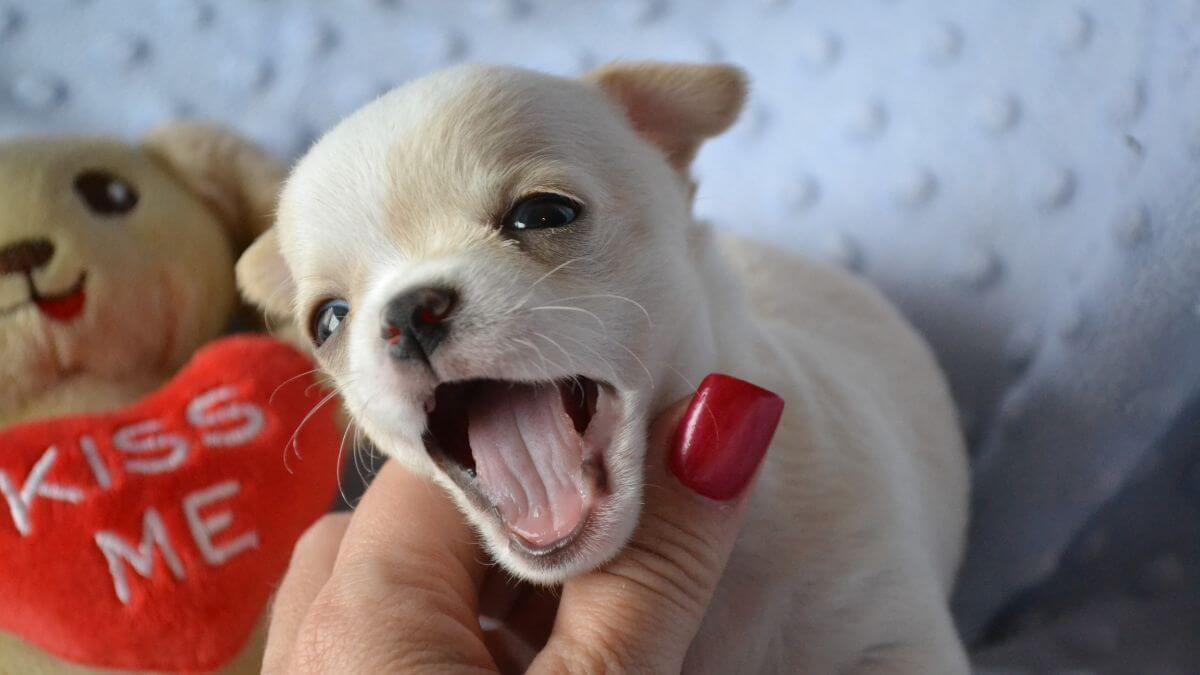
Introducing a Chihuahua puppy to its new home requires creating a warm and secure environment where the puppy can thrive. Due to the breed’s small size, the pup will need to be protected from hazards that might not pose a risk to larger puppies. Monitoring the new arrival closely ensures it will not get into situations where it could be injured.
Proper nutrition is vital for the healthy development of a Chihuahua puppy. Feeding a high-quality diet formulated for small breeds will support its growth and energy levels. Establishing a consistent feeding schedule helps with housebreaking and setting a routine for the puppy.
Veterinary care is crucial during the early stages of a Chihuahua’s life. Regular visits for vaccinations, wellness checks, and advice on preventive care are fundamental for setting the puppy on a path to good health.
Training and socialization should start early for a Chihuahua puppy. Despite the breed’s small size, these pups benefit greatly from learning basic commands and understanding boundaries. Positive reinforcement methods strengthen the human/canine bond and facilitate learning. Exposing the puppy to a variety of people, animals, and situations will help it to become a well-adjusted and sociable adult.
Chihuahua puppies are known for their strong attachment to their owners, making early socialization and training essential for preventing separation anxiety and promoting a confident, happy temperament. With the right care, a Chihuahua puppy can grow into a loyal and affectionate companion, bringing joy and liveliness to its family.
Chihuahuas may be small, but they have a lot of energy and enthusiasm. Participating in dog sports can provide valuable mental and physical stimulation for Chis and enhance the bond between each dog and its owner/handler. Here are some activities and dog sports suitable for Chihuahuas:
Including a Chihuahua in these activities not only helps to keep the dog physically fit and mentally sharp, it also deepens the understanding and connection between the dog and its favorite person. Whether competing in dog sports or simply learning new tricks at home, Chihuahuas are eager participants, ready to learn and eager to please.
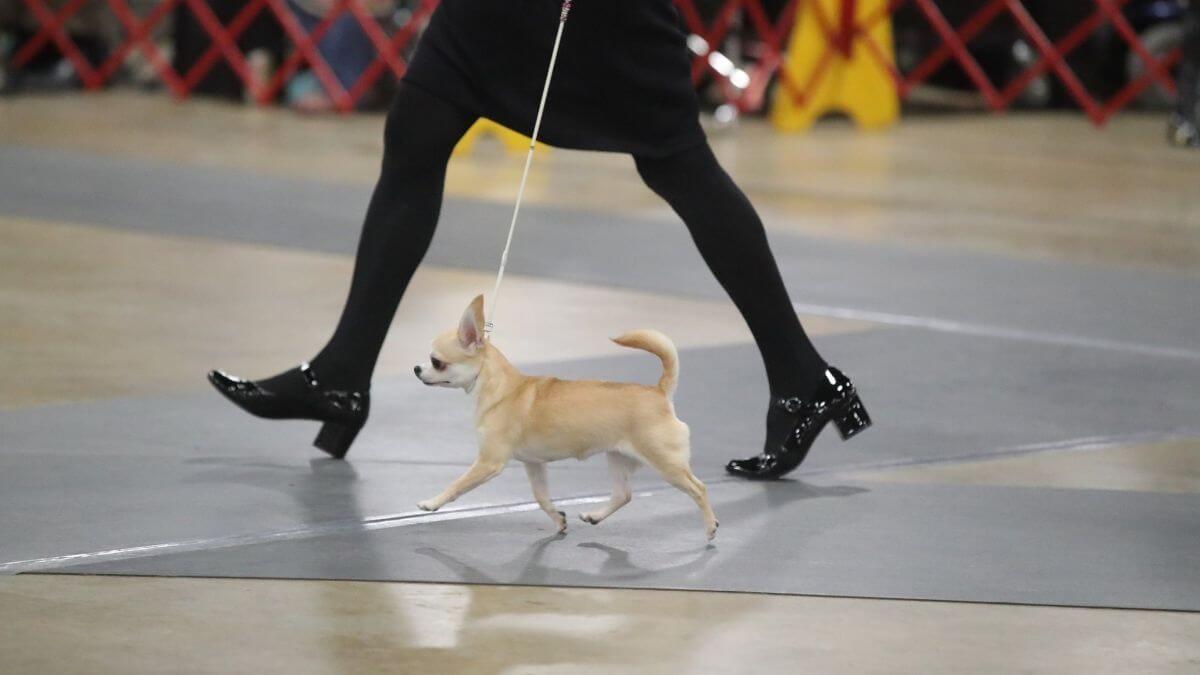
The Chihuahua is recognized by the world’s leading registries and kennel organizations, which categorize the breed into a specific Group based on its unique characteristics. This breed is recognized worldwide under the following Group designations:
| Organization | Group Designation |
|---|---|
| AKC (American Kennel Club) | Toy |
| UKC (United Kennel Club) | Companion Dog |
| CKC (Canadian Kennel Club) | Toys |
| ANKC (Australian National Kennel Council) | Toys |
| RKC (The Royal Kennel Club) | Toy |
| FCI (Fédération Cynologique Internationale) | Group 9: Companions and Toy Dogs; Section 6: Chihuahueño |
The ideal Chihuahua is described by a Breed Standard that is approved by each of the world’s leading registries and kennel organizations. The Breed Standards for this breed may be found in the following links:
| Organization | Breed Standard |
|---|---|
| American Kennel Club | AKC Chihuahua Breed Standard |
| United Kennel Club | UKC Chihuahua Breed Standard |
| Canadian Kennel Club | CKC Chihuahua Breed Standard |
| Australian National Kennel Council | ANKC Chihuahua Breed Standard (Long Coat), ANKC Chihuahua Breed Standard (Smooth Coat) |
| The Royal Kennel Club | RKC Chihuahua Breed Standard (Long Coat), RKC Chihuahua Breed Standard (Smooth Coat) |
| Fédération Cynologique Internationale | FCI Chihuahua Breed Standard |
Chihuahua clubs are great for fostering a sense of community among owners and enthusiasts of the breed, providing a platform to share information, celebrate the breed’s legacy, and advocate for its welfare. These organizations are instrumental in maintaining Breed Standards, encouraging responsible breeding practices, and offering educational resources.
The Chihuahua Club of America (CCA), established in 1923, is the foremost authority on Chihuahuas in the United States. It is dedicated to the breed’s well-being, adhering to the American Kennel Club’s standards. The CCA is an invaluable resource for Chihuahua owners, offering insights on care, health, and training, while also organizing events that highlight the breed’s unique qualities and capabilities.
In Canada, the Chihuahua Club of Canada serves as a key organization for breed enthusiasts, emphasizing the importance of health, ethical breeding, and education. The club plays a crucial role in the Canadian Chihuahua community, offering support and resources to breeders and owners alike.
The British Chihuahua Club, founded in 1949, represents the breed in the United Kingdom, where it is committed to the health and welfare of all Chihuahuas. The club organizes various events, including shows and educational seminars, to promote and celebrate the breed, offering a wealth of knowledge and networking opportunities for enthusiasts in the UK.
Engaging with a Chihuahua club can greatly enhance an owner’s experience with their dog, providing access to a wealth of knowledge and a network of like-minded individuals. These clubs not only advocate for the breed’s interests, they also offer members the chance to participate in activities, competitions, and social events, enriching the lives of Chihuahuas and their owners locally, nationally, and internationally.
A Chihuahua, like any dog, can sometimes find itself in need of a new home for a variety of reasons, ranging from owner surrender due to lifestyle changes to rescue from neglect or abandonment. Chihuahua rescue groups are at the forefront of providing these dogs with a second chance, offering shelter, care, and new families that can meet their needs and provide loving homes.
In the United States, Chihuahua Rescue & Transport (CRT) is a notable organization dedicated to the breed. With a network of volunteers across the country, CRT focuses on rescuing, rehabilitating, and rehoming Chihuahuas. They prioritize the well-being of each dog, making sure each Chihuahua that is placed through their program goes to a home where it will be loved and cared for throughout its life.
Canada is home to the Canadian Chihuahua Rescue and Transport, a nonprofit organization that works diligently to support the breed across the provinces. Its volunteers focus on providing care and rehabilitation for Chihuahuas in distress, finding suitable homes where they can thrive and live happy, fulfilling lives.
In the United Kingdom, the Chihuahua Rescue UK is deeply committed to the breed’s welfare, working to assist Chihuahuas in need across the country. The group provides a sanctuary for dogs in need, addressing their health and any behavioral issues while seeking permanent, loving homes for them.
These rescue organizations are essential advocates for the Chihuahua, helping needy dogs receive the care and attention necessary to recover from past misfortunes. Supporting or getting involved with Chihuahua rescue groups can be incredibly gratifying, offering the opportunity to make a meaningful difference in the lives of these small but spirited dogs.
Chihuahuas are known for their longevity and can live between 14 and 16 years, with some reaching up to 20 years with proper care. Their lifespan is influenced by factors like genetics, diet, exercise, and the quality of veterinary care they receive. Regular check-ups, a nutritious diet, and an active lifestyle are crucial for keeping a Chihuahua healthy throughout its life.
Chihuahuas shake for various reasons, including excitement, anxiety, or because they are cold. Due to their small size, they have a higher metabolism and less body fat, making them more susceptible to temperature changes. Shaking can also be a response to stress or a way to release excess energy.
Yes, Chihuahuas do shed, although the amount varies between the two coat varieties. Smooth-coated Chihuahuas shed less than their long-coated cousins, but expect some shedding year-round on both. Regular grooming, including brushing and bathing, can help to manage shedding and keep either coat clean and healthy.
Chihuahuas were originally bred for companionship, a role they continue to fulfill today. They were highly valued by ancient civilizations like the Toltecs and Aztecs, possibly for their spiritual significance. Despite the dogs’ small size, they are very alert and have a keen sense of hearing, making them good little watchdogs.
Chihuahuas are indeed smart and can learn commands and tricks quickly when properly motivated. They are known for their cleverness and their ability to adapt to the routines of their owners. However, their intelligence also means they can be stubborn when they want to be, so consistent and positive training methods work best.
Chihuahuas can display aggression due to fear, a lack of proper socialization, or the need to protect their territory. The breed’s small size makes the Chi more vulnerable than most dogs, which can lead to defensive behaviors. Training, socialization, and building trust can mitigate aggressive tendencies and help Chihuahuas feel more secure in most situations.
Chihuahuas originate from Mexico, specifically from the state of Chihuahua. They are considered descendants of the Techichi, a companion dog favored by the people of the Toltec civilization. The breed as we know it today was developed and popularized in the 19th century.
No, Chihuahuas are not considered hypoallergenic. Like all dogs, they produce dander, saliva, and urine, all of which can trigger allergies in sensitive individuals. Regular grooming, and maintaining a clean environment, can help to minimize allergens, but people with severe allergies should consult with a doctor.
A typical Chihuahua weighs between 2 and 6 pounds, although some can be slightly heavier, especially if they are not kept in ideal condition. The Chi’s weight should be proportionate to its size, and maintaining a healthy weight is crucial for the dog’s overall health and longevity.
Chihuahuas can swim, but not all of them enjoy it or excel at water sports. Due to the breed’s small size, they can tire easily and may feel overwhelmed by large bodies of water. If introducing a Chihuahua to swimming, it’s important to do so gradually and ensure the dog’s safety by considering a doggy life vest and closely supervising all time spent in and around the pool.

Interview with Carrie Griffen-Yakush, handler of “Beetle,” the 2022 AKC Fast CAT Invitational Winner, in the Speed of the Breeds Division.

Tina Bregman shares insights on breeding Chihuahuas: health testing, breed trends, and the importance of breed education.

Barbara Smith is the breeder behind BK’S Chihuahuas. Read about the kennel’s beginnings, the sires, the dams, the puppies, and much more!

Michelle Herod is the breeder behind H&H Chihuahuas. Read about the kennel’s beginnings, the sires, the dams, the puppies, and much more!
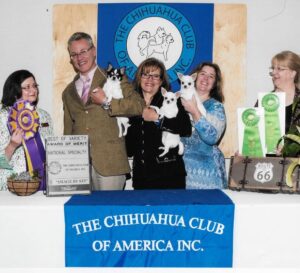
Showsight’s Allan Reznik sat with William H. (“Billy”) Miller | Bayard Chihuahuas who shared insights on his journey in our community.
The best way to ensure a long and happy relationship with a purebred dog is to purchase one from a responsible breeder. Not sure where to begin?
Contact the National Parent Club’s Breeder Referral Program, which is listed on the AKC Breeder Referral Contacts page.
